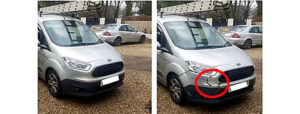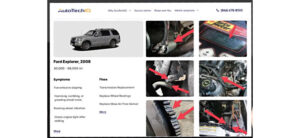Next-generation labeling allows technicians and auto parts stores to use mobile devices to scan a unique serialized barcode to determine a product’s authenticity
Unintentionally buying a counterfeit video game or designer watch may mean a loss of money, great disappointment — and certainly an awful feeling of being cheated. Unfortunately, the nefarious action of counterfeit products does not stop with consumer electronics, clothing, and jewelry.

Counterfeit automotive parts can put your customers and their families in grave danger causing serious injury and possible death. There are numerous examples of these actions:
• Airbags which do not meet OEM specifications can fail to deploy as needed to protect passengers
• Drivetrain components which fail OEM specifications can cause a fire
• Brake pads made of sawdust and grass which fail during any stop
• Wheels/rims made with inferior constructions can explode during extended driving when they get hot
These are but a few examples.
Customers put their trust in the hands of a technician to repair their vehicles. They have the knowledge and equipment to repair today’s cars. Customers also trust them to purchase parts that meet OEM specifications and are not counterfeit.
But how do they know the parts are authentic?
According to a report by Toyota, up to 35 percent of the parts purchased online are counterfeit. Counterfeit auto parts are costing the industry over $20 billion yearly. What is the cost of causalities from the counterfeit parts?
Increase in e-Commerce promotes opportunity for counterfeiting
Instituting new laws and increasing the policing of the industry may not be enough to prevent the crisis at hand. The automotive industry must start to take a look at recent developments in the pharmaceutical industry to help guide them for the prevention of counterfeiting. Along with a security label, a track and trace system that instantly verifies the product information is valid is needed. Such systems are widely used in the pharmaceutical industry due to the enactment of the Drug Supply Chain Security Act (DSCSA) requiring that all pharmaceuticals be serialized, track and trace systems are gaining traction in consumer goods.
Track and trace systems use unique product identifiers — such as serial numbers — to track individual products throughout the supply chain, from production to end consumers. It also helps manufacturers significantly reduce counterfeiting by ensuring products can be easily identified. Modern track and trace systems are cloud-based and provide 24/7/365 access for product verification.
Intelligent next-generation labeling
The least expensive and most effective way to help prevent counterfeiting is in the labeling of the part when the product is either boxed or tagged immediately during the manufacturing process. A serialized bar code can be assigned to a specific part, which can be traced throughout the supply chain. Since most parts are labeled, adding an intelligent labeling solution to the existing label will help prevent counterfeiting.
The most effective labeling technology solutions against counterfeiters are multi-faceted and, therefore, exceedingly difficult to replicate. They combine both overt/covert labels into the package decoration, incorporate unique holograms, take a fingerprint of the label, leverage GS1 barcoding for serialization and uses a smartphone app to authenticate the product.
The basic tamper-evident label that is often used on auto parts only lets buyers know if the product has been tampered with; for example, the box or the container has been opened. With these labels, a “void” pattern or some residual marking has been left behind. The need to outsmart even the best counterfeiter can be difficult. Next-generation labeling combines overt and covert technology into the label in such a way that the label is nearly impossible to counterfeit.
With intelligent next-generation labeling, technicians and auto parts stores can use their mobile device to scan the label’s unique serialized barcode, which reveals hidden information that is analyzed and validated to determine the product’s authenticity. Within an instant, they will know whether the product is fake or not. The GS1 certified barcode allows the mechanic or parts store to track and trace the entire trip the product took through the supply chain.
Unfortunately, counterfeit auto parts are not like buying a video game or a watch. The consequences are not marked with money spent poorly, but with the potential of a life-altering event. According to HuffPost, the eighth-leading cause of an accident is design flaws. By adding counterfeit parts to the car only increases the odds.
Ron Ducharme serves as vice president of Business Development at Covectra, a leader in track and trace solutions. Ducharme can be reached at rducharme@covectra.com.





Comments are closed.